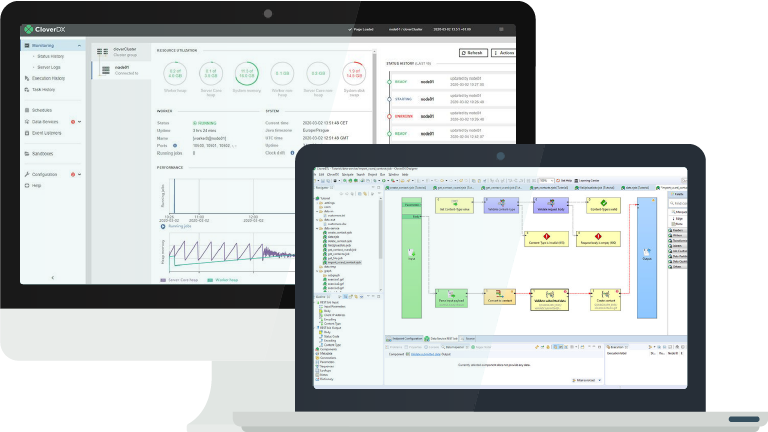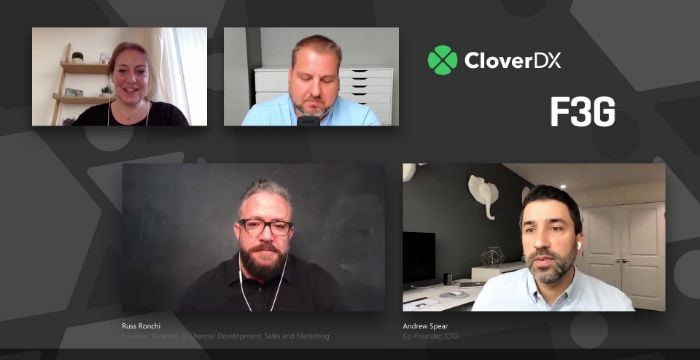In a world dominated by data, a well-executed data architecture ensures your business remains healthy and growing. Without it, you’ll fail to unlock the value of your data, run the risk of wasting money, and lose out to your competitors with more mature data strategies.

However, setting up a beneficial data architecture that aligns with your business strategy, though important, can feel daunting without the right experience and know-how.
Below, we’ve compiled all the critical knowledge and best practices your business needs to build or improve your data architecture.
What is Data Architecture?
Data architecture is a framework of rules, policies, models, and standards that dictate how your organization uses, stores, manages, and integrates its data, all while aligning with business, application, and technology architectures to achieve company-wide objectives.

Why is Data Architecture Important?
Data architecture is important because, without defined processes and strategies, your business will, at best, fail to unlock the true value of data. At worst, you’ll leave yourself open to the many dangers that strike organizations that mishandle their data. These include:
- GDPR fines
- Security threats
- Damaged reputation
- Lost business opportunities
Globally, we’re producing more data than ever. A few years ago, Forbes reported that the amount of data worldwide increases by 2.5 quintillion bytes daily, and that rate has only increased. As the volume, velocity, and variety of data grows, so does the need for a more effective architecture. Your organization must be primed to handle data as it increases in complexity and quantity – or risk falling behind.
Putting aside security fears and the onrushing data tidal wave, there’s plenty to get excited about. Below are just some of the ways that effective data architecture can help your organization:
- Cut costs – by defining which data you should and shouldn’t be storing, you can reduce cloud and onsite storage costs
- Better decision-making – recognize, interpret, and put high-value data in front of decision-makers, and your organization will benefit
- Faster innovation – the correct data needs to be available to everyone because silos keep departments in the dark and prevent insight and innovation
Now you know what you’re aiming for, let’s look at the core principles that contribute to an effective data architecture.
Data Architecture Principles
There are a few core principles to consider that will affect the design and success of your data architecture. These include:
- Business architecture and policies. Depending on your sector, specific regulatory or professional standards may exist. For example, financial sector regulatory requirements – such as Basel II and Basel III – are stringent and play a prominent role in the formation of data architecture in the banking sector
- Technology architecture. The hardware and software supporting your data architecture are also important factors. For example, previously purchased software licensing will dictate both historic and ongoing inputs into your data pipeline and shape the overall data architecture
- Economic reality. Some data architecture solutions provide only incremental improvements and might be valuable to organizations looking to refactor rather than overhaul. Others offer more compelling solutions at a lower price. For example, hiring a new data cleansing team is costly and time-consuming. But an automated data cleansing solution can tick the same boxes at a lower price and deliver faster, more profitable success
Only when you understand your organization's position and needs can you effectively build a data architecture that unlocks the true value of your data.
Blog: 4 Data Architecture Principles That Will Accelerate Your Data Strategy
How and Where is Data Stored?
An essential pillar of your data architecture is establishing what data you want to store and where you want to store it. There are various options to consider, each with different pros and cons.
Let’s cover the big three: data warehouses, data lakes, and data vaults.
Data Warehouses
A core component of business intelligence, data warehouses are where you pull data from a wide range of operational sources for analysis and reporting to unlock further value.
Data warehouses optimize for simplicity, ease of use, and access speed for the end-user. KPIs, for example, must be easily accessible to non-developers who want visibility and insight at a glance.

Data Lakes
A data lake is a collection of data stored in its ‘natural’ form. It’s a catch-all area for any enterprise data and is typically built from various sources, such as analytics, reporting, or machine learning. It’s optimized for quantity and is a home for data to sit untouched before it is cleaned, interpreted, and transformed.
Data Vaults
Data vaults are for long-term data storage and creating a single source of truth.
Accuracy and overall data quality are thus essential qualities for data vaults. Data vaults are commonly used for audits, as finalized sensitive data sets are safely stored here.
These factors make data vaults less agile but perfect for long-term projects as they help align specific projects and the overall organization.
White Paper: Your Guide to Enterprise Data Architecture
Fixing Flaws in Your Data Pipeline Architecture
Your data pipeline architecture brings together data from different sources and makes it strategically valuable for your business.
To ensure your data pipeline architecture is providing the value you require, ensure the following:
- All data sources are ‘plugged in’ to the pipeline and aren’t feeding repeated data sets
- Your pipeline is delivering insights and is sufficiently agile (for example, make sure generating reports takes hours instead of days)
- Scaling isn’t a problem – as the volume of data you're working with grows, it shouldn’t cause a bottleneck in your processes
As your business grows and your requirements change, fixing and modernizing your data pipeline is essential to staying ahead of the curve and driving profitable innovation.
Modernizing Your Data Architecture and Eliminating Data Silos
One of the most significant barriers to an effective data architecture is the unintended creation of data silos. If you don’t create a modern data architecture that feeds data effectively through your organization, your data risks becoming isolated and unused.
An example of this is a marketing department that fails to pass on the right data to sales, ultimately resulting in a loss of new opportunities for the business.
Reducing Bad Data: Why It’s Important and How To Do It
A good data architecture must manage and reduce bad data as much as possible. Poor data quality can create knock-on effects and decrease data value as it spreads through an organization.
Blog: Managing Bad Data: 5 Things You Need to Know
If your organization is experiencing consistently bad data, it’s vital to first look at organizational issues. Consider:
- Upskilling workers – human error is a big contributor to poor data quality. Train your staff effectively so they don’t introduce bad data into the system and can both recognize and correct it
- Analyze business processes – poorly constructed processes lead to the collection and distribution of bad data. For example, if one source inputs dates as day/month/year and the other as month/day/year, there will be data consistency issues unless your data is standardized as part of your process.
Making these changes contributes to fewer occurrences of error and a more effective, high-value data architecture. But what can you do, specifically, to clean data? Below are some tips:
Typically, it’s easier to detect issues than it is to correct them. It’s also easier to clean data at the point of entry than to clean it down the road after it’s spread further along your data pipeline. Follow the tips above to ensure your data architecture helps contribute to high-quality data.

Data Architecture with CloverDX
Creating an effective data architecture for your organization is rarely straightforward, especially when you're so close as to make objective assessment nearly impossible.
Choosing the best data architecture for your business requires asking yourself some big questions, including how much you're realistically looking to spend, how often you might want to rethink your business’s data strategy, and what the skill level of your workforce is.
Get your guide: The Buyer's Guide to Data Integration Software.
Remember, data storage has come a long way, and we’re still seeing rapid expansion. Any prospective solution must be suitable not only for the present but also for the future.
What the process looks like
Choosing from so many options and methodologies can feel overwhelming, and it’s worth seeking information and a run-through from industry experts before you pick.
Next, ask yourself some important questions.
- Is your data pipeline as streamlined as it should be?
- Are you using data to track the right KPIs?
- Are you building your data architecture in the most effective way?
Some or all of these are likely hard to answer, especially if you don’t have experienced data architects in-house. Working with experts helps cut to the heart of what you need. It takes the weight off the shoulders of you and your IT team while helping to get it right the first time without wasting time and money.
By establishing effective data architecture, the following benefits are gained:
Diagnosing the problems with – and caused by – your data architecture lays the foundation for better business performance. Remember that every company incurs inefficiencies and bottlenecks over time. Those organizations that not only prioritize identifying any issues but treat the underlying cause, as opposed to the temporary symptom, are the ones that thrive.
We can help
Our demos are the best way to see how CloverDX works up close.
Your time is valuable, and we are serious about not wasting a moment. Here are three promises we make to everyone who signs up:
- Tailored to you. Every business is unique. Our experts will base the demo on your individual business use case so you can visualize the direct impact our platform can have.
- More conversation than demonstration. Have a question? We want to hear it. The process of establishing the ideal data architecture for your business will, naturally, come with concerns or anxieties. We want you to voice them so we can help find a beneficial way forward for your organization.
- Zero obligation. We’ve all been there. You spend some time hearing about a product or service… and then comes the hard sell. Our team doesn’t ‘do’ pushy. We prefer honest, open communication that leaves you feeling informed and confident.
Get in touch for a personalized demo.








